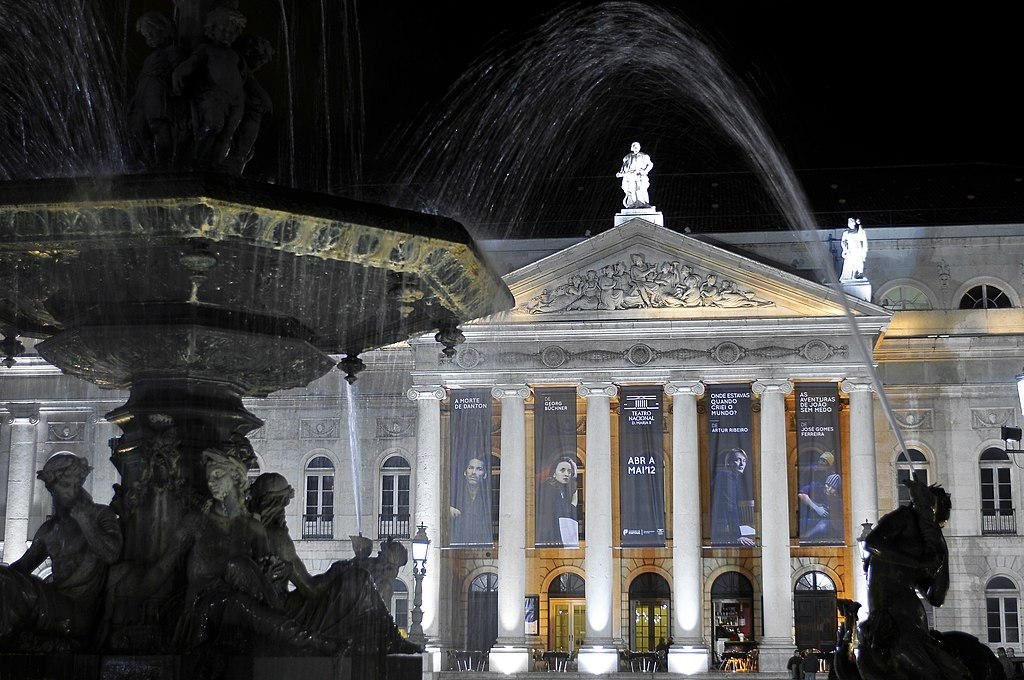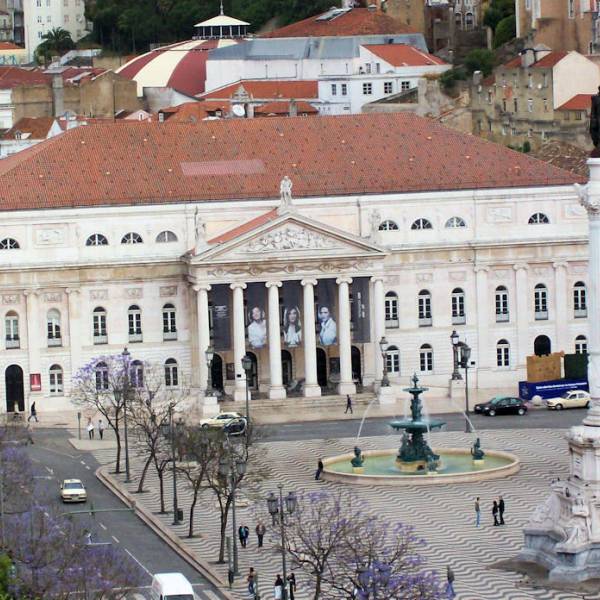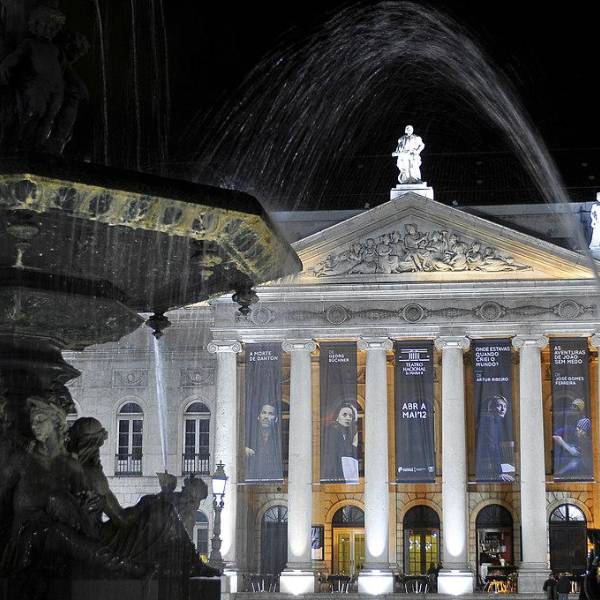The Romantic ambiance sweeping across Europe at the time emphasized the urgency of developing a national theater and repertoire. It was understood that the affirmation of a "national art" was crucial for defining the nation accurately. Therefore, the emergence of a national theater (along with a repertoire) became not only a cultural matter but also a political one, closely tied to the nation's independence.
Between 1836, the year the theater was legally established, and its inauguration in 1846, a provisional national theater operated at the Teatro da Rua dos Condes, later transformed into Cinema Condes.
The ruins of the Palácio dos Estaus, the former headquarters of the Inquisition destroyed by fire in 1836, were chosen as the site for the permanent Teatro Nacional. The selection of Italian architect Fortunato Lodi to design and execute the theater sparked some controversy. Finally, in 1842, Almeida Garrett could commence the construction.
On December 17, 1928, the theater was classified as a property of public interest, designated as Teatro Nacional de Almeida Garrett, through Decree No. 15,962. In 1939, it returned to its original name, Teatro Nacional D. Maria II. The theatre honors Queen Maria II of Portugal with its name since then.
For an extended period, Teatro Nacional D. Maria II was managed by artist societies that competed for its management through a bidding process. The Rosas e Brasão company held the theater from 1881 to 1898, but the most enduring management was that of Amélia Rey Colaço and Robles Monteiro, who oversaw the theater from 1929 to 1964.
In December 1964, a devastating fire ravaged the Teatro Nacional, sparing only its exterior walls. The reconstructed building, faithfully honoring the original neoclassical style, reopened its doors in 1978.
Since 1978, the theater has been led by a series of directors, including Ribeirinho, Lima de Freitas, Braz Teixeira, Afonso Botelho, Ricardo Pais, Agustina Bessa-Luís, António Xavier, Carlos Avilez, José Amaral Lopes, João Grosso, António Lagarto, and others.
Lisbon.vip Recommends
In 2012, the theater was reclassified as a national monument, further solidifying its significance. This reclassification, approved by the Council of Ministers on May 24 and published in the Official Gazette on July 10, 2012, pays homage to the theater's architectural and cultural importance.
Teatro Nacional D. Maria II stands as a living testament to Portugal's vibrant cultural heritage, providing a platform for artistic excellence and a profound connection to the nation's theatrical past. It continues to enchant audiences with its captivating performances and timeless architectural splendor, ensuring that its historical legacy endures for generations to come.





